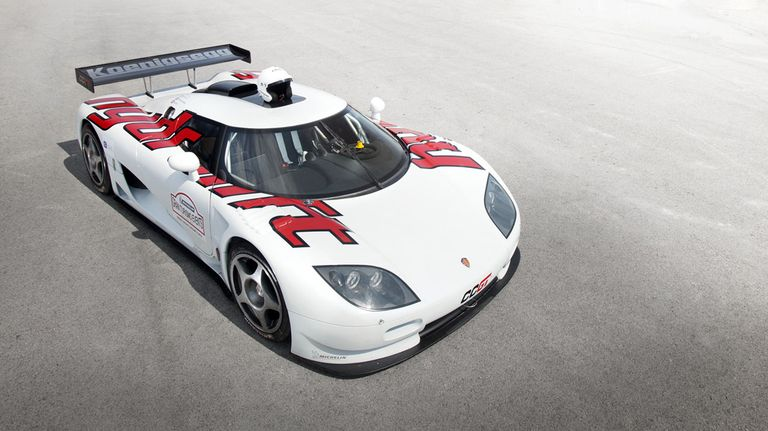Search the Community
Showing results for tags 'gt1'.
-
<Why Koenigsegg Never Went Racing, And Why It Doesn't Plan to Start Christian von Koenigsegg explains why his cars have never competed at Le Mans, and why he doesn't intend to participate in the new Hypercar class. KOENIGSEGG Despite building some of the most innovative supercars on earth, Koenigsegg does not currently have a racing team. That's not for lack of trying: Founder Christian von Koenigsegg actually built a viable race car with intent to compete at the 24 Hours of Le Mans when his company was in its infancy. But it never happened, and during a lengthy conversation with the man behind the Swedish performance car company, we learned more about why his Le Mans ambitions fell apart—and whether he hopes to try again. In 2007, Koenigsegg built a fully-functional race car that exactly followed the FIA's Group GT1 rules. The race car, called CCGT, bore a strong resemblance to Koenigsegg's second production model, the CCR. But its roots went back even further, to the very first prototype Koenigsegg built, called CC. As explained on a Koenigsegg company blog post, the original CC, and the race car it spawned, was designed to fit exactly into GT1's dimension requirements: The car could be two meters wide at the maximum, and the cockpit had to span 70 percent of the vehicle's overall width. It had a dry weight of 2200 pounds (significantly below the minimum weight for GT1, which would mean adding ballast to reach the required weight) and was powered by a naturally aspirated V-8 making well over 600 horsepower. But two months after the CCGT's first shakedown runs, the ACO and FIA had a change of heart. The governing bodies banned carbon-fiber monocoque construction, which was used in every Koenigsegg road car and thus formed the basis of the CCGT. The regulators also raised the minimum production requirement dramatically. Previously, an automaker was required to construct 20 street-legal examples of a model, in total, to be eligible to race. After the 2007 change, that number rose to 350 cars per year, impossible for a tiny automaker like Koenigsegg to achieve. The CCGT was ruled out of the class before it ever competed in a single race. The only Koenigsegg CCGT ever built. | KOENIGSEGG "We were aiming to go racing in the GT1 series, which was perfect for our type of cars—road-going hypercars turned race cars" von Koenigsegg told Road & Track during a recent, lengthy conversation. "Then they shut it down right when we were about to go racing, which was very annoying. Since then, there hasn't been any series for these types of cars." The rule change left von Koenigsegg without a place to take his supercars racing. "Even if we would be allowed to go to the highest level of GT racing, we would be competing against Porsche 911s and Ferrari 488s"—sports cars built to vastly different performance goals than Koenigsegg's cars, which commanded well over half a million dollars each. Even if von Koenigsegg had wanted to compete in such a class, he worried that his cars would be "completely downgraded through Balance of Performance via restrictors, because we are not supposed to be any faster. And then it would be just a super-expensive racing car, which would cost more to repair than a 911, and we might even get beaten by a 911 because of BoP, while in reality, they are completely different vehicles. That doesn't make any sense." So Koenigsegg's racing dreams died in 2007, before they could ever become real. But what about today? The WEC's new Hypercar class debuted this year, and it was seemingly built for exactly the kind of extreme vehicles that Koenigsegg builds. But the man behind the Swedish supercar company is unconvinced. "Of course, they started this Hypercar series at Le Mans, but in the end it turned out to be some kind of LMP car again, so it's just a new name for the same kind of thing, more or less." Does von Koenigsegg see a racing future for his cars? Not under the current rules. "The alternative, I guess, is to build some kind of a Le Mans Prototype, which has no relation to our road cars, which I don't find too appealing. I would like to go back to the GT1 type of class, where we [could] see Bugattis, Paganis, Koenigseggs—modified road cars featuring completely different technologies. Not this silhouette racing where you have the same chassis under different bodies. Granted, it would be a very expensive series, given the price of these cars, but then we could build up on what we have. Everyone could showcase something you could actually buy, if you're extremely wealthy. That's what we would like, but I'm not sure if it could ever happen.">
- 3 replies
-
- 2
-

-
- koenigsegg
- ccgt
-
(and 27 more)
Tagged with:
- koenigsegg
- ccgt
- ccr
- fia
- gt1
- le mans
- prototype
- racing
- motorsport
- aco
- wec
- homologation
- limited production
- endurance
- 24 hours
- silhouette
- race cars
- balance of performance
- bop
- federation internationale de lautomobile
- automobile club de louest
- world endurance championship
- supercars
- hypercars
- sports cars
- lmp1
- lmh
- interviews
- christian von koenigsegg
-

Maserati competes in the 2010 FIA GT1 Championships: First race, 17th April 2010
Rigval posted a blog entry in MyAutoBlog
The 2010 FIA GT1 World Championship will start off on Saturday, 17 April at the Yas Marina circuit in Abu Dhabi with six manufacturer entries consisting of twenty-four cars. The defending champions, the Maserati MC12s, are expected to be at the forefront, even if they are slightly penalized in terms of performance by new FIA GT technical modifications. This is actually nothing new as when the racing versions of the MC12s first came out in 2004, the GT1 rules were somehow changed and the cars were already penalised for their extra range. One of the major changes to the GT1 Championship is the race formula itself, with two separate sprint-type one-hour races instead of a single two-hour race. It could be more interesting as spectators get to watch two races instead of one. And we all know that the most exciting stuff happens during the start of every race. Especially at the first corner. Maserati will participate in the GT1 Championship with four cars manned by two teams. Michael Bartels and Andrea Bertolini, winners of the driver title for the past two years running, will be driving Vitaphone Racing Team's lead Maserati MC12 once again, while Miguel Ramos and ex-F1 driver Enrique Bernoldi will helm the second MC12. The other MC12s are from the German racing team Triple H Team Hegersport and will be driven by a Belgian, Bert Longin and an Italian, Matteo Bobbi . This is in addition to the team's owner MC12, where Alftid Heger will be paired up with Alex Margaritis, a German driver of Greek origin. There will be ten championship rounds, four of which outside Europe and again a middle eastern country starts off the racing season (which shows you where the actual customer base for expensive GT cars is located nowadays). The championship will conclude in Argentina on 5 December 2010. For those who are not familiar with the Maserati MC12, the car is actually an Enzo Ferrari in race clothing. It shares the same Ferrari V12 engine with slight modifications (for more torque), the same gearbox and the same chassis and track. The Maserati MC12 has its own bodywork which is wider, longer and slightly taller leaving the windshield as the only externally visible component shared with the Enzo. This extra size allows for greater downforce across the whole body, adding to that of the two metre wide spoiler. It is harder to drive yet is faster than the Enzo on most race tracks. This is supposedly due to its more focused nature, more racer than road car compared with the Enzo. It is because of the focused nature that the car is still competitive five years after its launched. For those who may be in or around Abu Dhabi, the schedule for the race at Yas Marina is as follows: Practices: Friday, 16 April, from 7:30 pm to 8:30 pm (local time) Race: Saturday, 17 April, from 4 pm to 5 pm and from 7:45 pm to 8:45 pm (local time)


